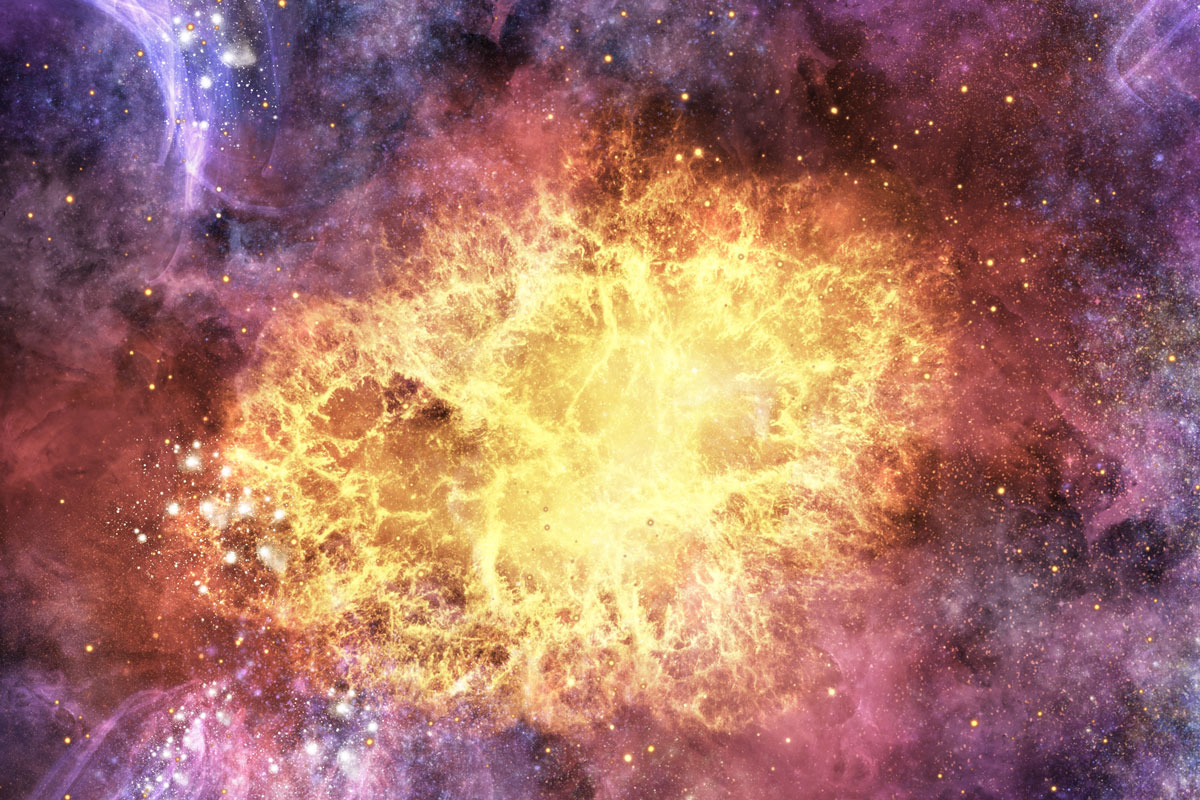The enigmatic phenomenon of a supernova, a cataclysmic explosion heralding the demise of massive stars, captivates both scientists and enthusiasts alike. Manifesting as an ephemeral beacon in the cosmos, a supernova serves as a stellar chorus, signifying not merely destruction, but a profound transformation. This treatise seeks to elucidate the mechanisms that govern these cosmic fireworks, exploring the intricate processes that catalyze such enormities across the galactic canvas.
At a fundamental level, the genesis of a supernova can typically be delineated into two categories: core-collapse supernovae and thermonuclear supernovae. Core-collapse supernovae arise from the catastrophic implosion of a massive stellar core, a process reminiscent of a grand edifice collapsing under its own weight. When a star exhausts its nuclear fuel, the delicate balance between gravitational collapse and outward radiation pressure is disrupted. The core, predominantly composed of iron—a vestige of fusion processes—can no longer sustain fusion reactions. As the internal pressures plummet, the once-mighty star succumbs to its own gravity, compressing the core to unprecedented densities akin to those found in neutron stars or even black holes.
This gravitational allure initiates an extraordinary sequence of events. The outer stellar layers rapidly implode towards the core, rebounding with such ferocity that they expel the outer material at phenomenal velocities, sometimes exceeding tens of thousands of kilometers per second. This explosive expulsion (the supernova remnant) ejects debris enriched with heavy elements into the interstellar medium. It is within these ephemeral flashes—these cosmic symphonies—that the elements essential for life are disseminated across the cosmos, rekindling celestial children in subsequent star formation.
Conversely, thermonuclear supernovae, typified by Type Ia supernovae, emerge from a different scenario—the explosive termination of a white dwarf star in a binary system. Here, a stellar corpse, the remnant of a sun-like star, accretes matter from a companion star until it reaches a critical threshold, enabling runaway nuclear fusion ionically akin to igniting a volatile concoction. The result is a homogeneous explosion characterized by a uniform brightness that contributes significantly to our understanding of cosmic distances. As the energy released during such an event is predictable, Type Ia supernovae serve as ‘standard candles’ in cosmology, illuminating our comprehension of the universe’s expansion.
The energy yield of a supernova is nothing short of staggering. A single event can radiate more energy in a few weeks than the Sun will emit over its entire lifetime. This immense energy production is primarily derived from rapid nucleosynthesis—the process of forming new atomic nuclei from pre-existing nucleons. The primordial building blocks from which the universe is formed are altered in the furnace of a supernova, leading to the creation of elements such as gold, silver, and uranium. Such nucleosynthesis is akin to a cosmic alchemical workshop, transmuting the simplest elements into the heavy metals that comprise planets, stars, and eventually, the very beings that gaze into the night sky.
Moreover, researchers have begun to unveil the subtleties of the supernova mechanism, positing the role of neutrinos and magnetic fields in orchestrating the explosiveness of these astronomical events. Neutrinos, nearly massless and weakly interacting particles, account for the majority of energy emitted during a core-collapse supernova. The energy expelled in a brief burst of neutrinos can rival that of the subsequent electromagnetic output, suggesting that this phantom-like particle plays a pivotal role in the dynamics of the explosion. Additionally, the emergence of magnetars—highly magnetized neutron stars—has led scientists to theorize that interplay between intense magnetic fields and rotation may contribute crucially to the violent ejecta associated with supernovae.
The study of supernovae extends beyond understanding their explosive grandeur. Investigating these phenomena also unveils underlying cosmological principles, addressing questions related to the fate of our universe. Dark energy, an elusive force driving the acceleration of cosmic expansion, is intricately bound to the observations made through Type Ia supernovae. This intertwining of explosive stellar deaths and universal evolution demonstrates the importance of supernovae not merely as individual events, but as beacons illuminating the larger tapestry of cosmic history.
Ultimately, supernovae are the cosmic crucibles from which the elements and galactic structures of our universe arise. They are both cataclysm and creation, destruction and genesis. This juxtaposition captures the unique allure of supernovae—tremendous forces that, in their fiery death throes, give birth to potential new worlds and life. As astronomers continue to probe the depths of these fires, they are not merely observing explosions; they are uncovering the very engines of the cosmos that fuel the cycle of stellar evolution, shaping the universe we inhabit.
In conclusion, the intricate dance of forces and particles within a supernova stretches the boundaries of our understanding of physics and the universe itself. By fathoming the mechanics of these stellar explosions, we glean insights into not just stars, but the elemental genesis that defines our existence. Each supernova adds a verse to the ever-unfolding saga of the cosmos, a reminder of the ongoing interplay between destruction and creation that characterizes the universe.










